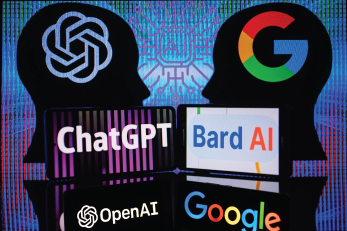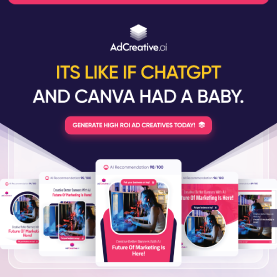Introduction
Marketing in today’s hyper-competitive digital world feels like a never-ending race, doesn’t it? You’re juggling content creation, analytics, social media, customer engagement—the list goes on. But what if I told you there’s a way to work smarter, not harder? Enter Artificial Intelligence (AI)—the ultimate power-up for marketers. From crafting attention-grabbing copy to decoding complex data, AI has become a game-changer, helping marketers save time, amplify results, and stay ahead of the curve.
I get it—embracing AI might feel intimidating at first. I’ve been there, staring at new tools and wondering, How does this fit into my workflow? But trust me, once you integrate the right AI tools, you’ll wonder how you ever managed without them. They’re not just about efficiency; they’re about unlocking opportunities you didn’t even know existed.
In this blog, we’ll explore 10 AI tools that every marketer should have in their arsenal. Whether you’re looking to supercharge your content, streamline customer interactions, or make data-driven decisions with ease, these tools are here to revolutionize your marketing game. Ready to dive in? Let’s go!
1. Content Creation and Copywriting Tools: Unlocking Creativity on Demand
Content is everything. Whether you’re crafting a blog post, writing an email campaign, or dreaming up the perfect Instagram caption, it’s what connects you to your audience. But let’s be real—coming up with fresh, engaging ideas day after day can feel like pulling teeth. I’ve been there, staring at a blank Google Doc, thinking, Is my creativity on vacation? That’s where AI copywriting tools like Jasper, Copy.ai, and Writesonic come in to save the day.
These tools don’t just churn out generic text; they’re designed to mimic tone, style, and structure based on the most successful content in your niche. I remember the first time I tried Jasper. I was launching a new service and needed a landing page that would wow potential clients. After inputting some basic details about my audience and goals, Jasper generated copy that was not only polished but felt like it had been written by someone who truly got my brand. I didn’t just save time—I delivered something that genuinely resonated.
Here’s the thing: AI tools aren’t here to replace your creativity; they’re here to enhance it. Think of them as your brainstorming partner, someone who’s always available and never runs out of ideas. Need a headline? Jasper will give you five. Writing social media captions? Copy.ai can generate witty, scroll-stopping options in seconds.
Pro Tip: Use these tools to create a first draft, but don’t just copy and paste. Edit, refine, and add your personal flair to ensure the final result feels authentically you. AI gives you the bones; it’s up to you to add the soul.
Take this example: Imagine you’re launching a new skincare product. Instead of wrestling with writer’s block, you input your product details into Writesonic—highlighting the benefits, key ingredients, and your target audience. Within moments, you’ve got a compelling, customer-centric product description. From there, you can tweak it to match your brand’s voice and mission.
At the end of the day, tools like these aren’t just about speed. They’re about consistency, quality, and ensuring your content stands out in an increasingly noisy digital world. So, next time you’re stuck, give AI a shot—it might just be the creative partner you didn’t know you needed.
2. Social Media Management Tools: Streamlining Your Digital Presence
Let’s be honest—managing social media can feel like a full-time job. Keeping up with algorithms, posting consistently, analyzing performance metrics… it’s a lot. I vividly remember launching my first content campaign and realizing I’d spent more time figuring out when to post than actually engaging with my audience. That’s when I turned to AI-driven social media tools like Buffer, Hootsuite, and SocialBee—and trust me, they’ve been game-changers.
These tools don’t just save time; they make your social strategy smarter. For example, Hootsuite’s AI features analyze your past posts and suggest the best times to publish for maximum engagement. I once tested this with a campaign on Instagram and saw my reach jump by 40% just by scheduling posts at optimal times. It felt like I’d unlocked some secret marketing hack, but really, it was just the tool doing its thing.
Here’s the beauty of these platforms: They go beyond just scheduling. Tools like SocialBee can categorize your content—whether it’s evergreen posts, promotional updates, or curated links—and rotate them strategically to keep your feed fresh without overwhelming your audience. Plus, the analytics dashboards are a lifesaver. I no longer spend hours combing through individual platform insights; everything I need is in one place, broken down into actionable data.
Pro Tip: Use these tools to maintain consistency, but don’t automate everything. Balance pre-scheduled posts with real-time engagement to stay authentic. For instance, I like to schedule my content a week in advance but still hop on daily to respond to comments and start conversations. Your audience can tell when you’re genuinely present versus when you’re just ticking a box.
Imagine this scenario: You’re a small business owner juggling operations and marketing. Between managing inventory and answering customer queries, social media is often the first thing to fall through the cracks. Enter Buffer. With just a couple of hours each week, you can plan your entire social calendar, ensuring consistent engagement while freeing up time for other priorities.
At the end of the day, tools like these let you focus on what really matters—connecting with your audience and delivering value. Social media should work for you, not the other way around. So, if you’re feeling stretched thin, give one of these platforms a try. You’ll thank yourself later.
3. AI-Powered SEO Tools: The Secret Sauce for Content Creators
Let me tell you about the moment AI-powered SEO tools became my ultimate game-changer. It was a few years ago, and I was juggling half a dozen blog drafts, all screaming for attention. I thought I was doing everything right—researching keywords manually, crafting killer headlines, and pouring hours into perfecting every paragraph. Yet, the traffic needle barely moved. Frustrated, I turned to Surfer SEO on a whim, and it felt like unlocking a hidden cheat code for content creation.
AI tools like Surfer SEO, SEMrush, and Clearscope are like having a data-driven assistant that works 24/7 to help you rank higher and deliver exactly what your audience craves. These tools don’t just give you vague advice—they dig deep into what’s working in your niche and hand you a playbook to replicate (and improve on) that success.
Take keyword research, for example. Before AI tools, it felt like trying to find a needle in a haystack. You’d guess at phrases your audience might use, throw them into your content, and hope for the best. With tools like SEMrush, that guesswork disappears. They show you the keywords your competitors rank for, the search volume behind them, and even how hard it’ll be to break into the top results. It’s like having insider knowledge of the SEO battlefield.
But it’s not just about keywords—it’s about creating content that resonates. Here’s an example: I was working on a blog post about personal branding and decided to run it through Clearscope. It suggested a handful of related terms I hadn’t even considered, like “professional networking tips” and “personal website SEO.” Incorporating those terms didn’t just improve my post’s readability—it made it 300% more relevant to what my audience was actually searching for. The result? My post jumped from page three of Google to the top five in a matter of weeks.
One of the best things about these tools is their ability to guide structure. Surfer SEO, for instance, can analyze the top-ranking pages for a topic and suggest how many headings, paragraphs, or images you should include. It’s like having a blueprint for content success.
Here’s the kicker: AI tools aren’t a replacement for creativity. They’re here to amplify it. Use them to focus your efforts on what works and free up your brainpower for crafting content that connects.
Bottom line? Stop guessing. Let AI-powered SEO tools show you the way and start winning the traffic game today.
4. Email Marketing and Personalization Tools: Your Secret Weapon for Building Relationships
I’ll never forget the first time an email campaign actually worked. It was for a tiny eBook I had created, and I was beyond excited to share it with my audience. I crafted what I thought was the perfect email, hit “send,” and waited for the sales to roll in. Guess what? Crickets. I’d spent hours crafting that email, but the click-through rate was abysmal. It wasn’t until I discovered AI-powered email marketing tools like Mailchimp, ActiveCampaign, and HubSpot that I realized the power of personalization.
Here’s the thing: email isn’t dead—it’s just misunderstood. People don’t want generic, one-size-fits-all messages cluttering their inboxes. They want emails that feel like they were written specifically for them. That’s where these tools shine. AI-powered platforms analyze recipient behavior—like what links they’ve clicked, which emails they’ve opened, and even how long they’ve lingered on your landing page. With that data, they help you create hyper-personalized campaigns that actually resonate.
Take HubSpot, for instance. This platform’s AI capabilities let you create email sequences tailored to each lead’s journey. Let’s say someone downloaded a free checklist from your website but didn’t take the next step. HubSpot’s AI can nudge them with a follow-up email offering a related guide or discount. This isn’t just guesswork—these tools use data to predict what will get the recipient to engage. It’s like having a mind reader on your marketing team.
Another game-changer? Send-time optimization. Back in the day, I’d send emails at random times, hoping for the best. Now, tools like ActiveCampaign use AI to predict when your audience is most likely to open their emails. It might sound small, but hitting someone’s inbox at the right moment can be the difference between a sale and getting ignored.
And let’s talk subject lines. Crafting one that stands out is an art, but AI tools can analyze trends and suggest phrasing proven to increase open rates. Mailchimp, for example, offers predictive analytics to test your subject line before you send the email. It’s like having a second (smarter) pair of eyes.
Email isn’t just about selling—it’s about building relationships. When you use personalization tools, you’re showing your audience you get them. And when people feel understood, they’re far more likely to stick around—and buy. So, stop sending generic blasts and start creating emails that feel like they were made just for them. It’s worth every click.
5. Analytics and Insights Tools: Turning Data into Your Digital Superpower
Here’s a lesson I learned the hard way: relying on gut instincts alone is a fast track to mediocre results. I remember launching a big content campaign years ago. I was sure it would crush. The design was sleek, the messaging on point—or so I thought. Weeks later, I was staring at the analytics, trying to figure out why the needle hadn’t budged. That’s when I realized I hadn’t dug deep into the data. Enter tools like Google Analytics, Tableau, and Looker, which became my saving grace.
Analytics tools aren’t just for number nerds; they’re for anyone who wants to make smarter decisions. These platforms take massive chunks of data—stuff you’d never process on your own—and transform it into bite-sized, actionable insights. With tools like Google Analytics, you can see not just how many people are visiting your site but who they are, where they’re coming from, and what they’re doing once they get there. It’s like peeking into your customers’ minds.
Here’s a real game-changer moment for me: I had a blog post that wasn’t performing. Thanks to Google Analytics, I saw that people were dropping off after 10 seconds. Why? It turned out my introduction wasn’t grabbing attention. After reworking the first paragraph to address the readers’ pain points more directly, the bounce rate dropped by 25%. Data doesn’t just tell you what’s broken—it points you to the fix.
Now let’s talk Tableau and Looker. These tools take analytics to the next level. Imagine you’re running a multi-channel campaign across social media, email, and your website. Instead of piecing together insights manually, these platforms visualize it all in one place. You can literally watch trends unfold—like seeing which platform is driving the most engagement or which content type converts best. It’s like having a crystal ball for your business.
One of the coolest things? AI-powered insights. Google Analytics now suggests trends and anomalies automatically. Maybe a sudden spike in traffic comes from a backlink you didn’t know about, or a drop in conversions signals a broken link. You don’t need to be a data scientist to act on this stuff—it’s all laid out for you.
Bottom line: Analytics tools aren’t just about tracking performance; they’re about understanding your audience on a deeper level. With these insights, you can pivot fast, double down on what’s working, and stop wasting time on what’s not. Trust me—once you start using data to steer the ship, there’s no going back.
Use Case
Google Analytics can identify the most profitable traffic sources, helping marketers allocate budgets more effectively.
6. Customer Relationship Management (CRM) Tools
Examples:
- Salesforce (Einstein AI)
- Zoho CRM
- Pipedrive
How They Help
AI-powered CRM tools enhance customer interactions by predicting customer needs, automating follow-ups, and streamlining communication. They enable businesses to nurture leads effectively and improve retention.
Use Case
Salesforce’s Einstein AI can analyze customer data to suggest personalized offers, increasing sales opportunities.
7. Visual Content Creation Tools
Examples:
- Canva (Magic Design)
- Runway ML
- DALL-E
How They Help
Visuals play a crucial role in marketing, and AI-powered tools simplify graphic design and video creation. They enable marketers to create professional-grade visuals without prior design experience.
Use Case
Canva’s Magic Design feature can generate tailored templates for social media campaigns, saving hours of design work.
8. AI Chatbots and Customer Support Tools
Examples:
- ChatGPT
- Intercom
- Drift
How They Help
AI chatbots improve customer service by providing instant, accurate responses. They handle repetitive inquiries, qualify leads, and ensure 24/7 availability, enhancing customer satisfaction.
Use Case
A chatbot powered by ChatGPT can guide website visitors through product selection, boosting conversion rates.
9. Advertising and Ad Management Tools
Examples:
- Adzooma
- Google Ads (with AI features)
- Wordstream
How They Help
AI tools automate ad creation, optimize campaigns, and predict performance metrics. They help marketers run cost-effective campaigns with higher ROI.
Use Case
Google Ads’ AI can suggest bid adjustments to ensure ads reach the right audience at the best cost.
10. Marketing Automation Platforms
Examples:
- Marketo
- Pardot
- Klaviyo
How They Help
Marketing automation platforms centralize campaigns, manage multi-channel efforts, and track performance. AI enhances their capabilities by personalizing experiences and automating repetitive tasks.
Use Case
Marketo can segment audiences and deliver personalized campaigns across email, social media, and ads seamlessly.
Conclusion
AI is no longer a futuristic concept; it’s an essential part of today’s marketing toolkit. The tools highlighted in this blog empower marketers to work smarter, not harder, by automating tasks, enhancing personalization, and uncovering valuable insights.
As you explore these tools, remember that AI is here to complement your skills, not replace them. By embracing AI, you can unlock new levels of creativity and efficiency in your marketing efforts.
Call to Action: Which AI tool will you try first? Share your thoughts and experiences in the comments below!


